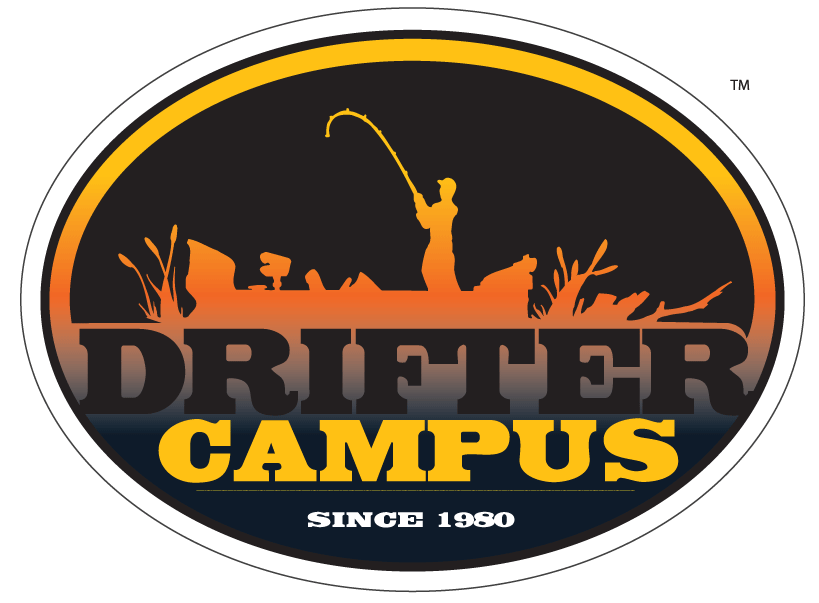Hi Folks. Well, it’s August again as I write this, and time to reflect on the past month fishing the mesotrophic portions of Lake Of The Woods. A strange year indeed. I was there for opening day, and had water temperatures in the 61 degree range. When I returned two weeks later, the water temperature was in the 59 degree range. Extreme cold periods. A few extremely hot days here and there. Extremely high winds every other day or so it seemed—with resulting extreme wind currents. Extreme mayfly hatches. Little algae bloom and often extremely clear water for the areas I fished. Rising water levels, then rapidly dropping levels. No weeds in some traditionally weedy places, and nearly unfishable mats in others. Some big fish full of eggs, others skinny as nails.
Fishing results? No surprise really—extreme variations there as well. One day I tie my all time daily record for numbers on Lake of the Woods. The next day, I’m skunked. One day most in camp see numbers of big fish, and then no one sees one for days. Novices catch big ones and numbers of fish besides, while some of the world’s best go home with little to show for a week of hard work. The only species more confused than humanoids were the fish themselves. Strange indeed. Upon return to Minnesota and having some discussions with guides and friends it seems the same conditions prevailed there as well.
So, did I learn anything? I think so. What follows are some thoughts I’ve taken away from the experience.
1. Weather changes: One of the legends and pioneers of our sport, Tony Rizzo, once wrote that when it comes to weather and musky fishing, ’any change is a good change.’ For years I agreed—unless the fish were already biting… Now, I’d qualify that slightly. Extreme change isn’t always good. The musky gods can keep any change from extreme cold to extreme heat, or extreme winds to calm weather, etc,. Give me more moderate change, or at least more gradual change, and I’ll be happier. From now on I’ll treat change from one extreme to another as I would a cold front. I’ll slow down and fish more thoroughly, work my lures more slowly, fish deeper—whatever it takes. But I won’t assume fish will be ‘hot and going’ and accordingly ‘run and gun’ like a maniac just because conditions changed.
2. Wind: Hah! Clearly there were days I regretted ever saying nice things about wind and clearly I was hung in effigy—at least figuratively—more than once by others in camp. But frankly, many in camp used the wind’s effects with success, as did I on numerous occasions. Extreme or not, if its at levels that can be fished safely and efficiently, wind can be an aid to success—perhaps more of an aid on mesotrophic waters than even I had previously thought. A thread of hope and consistency in a sea of doubt, confusion and inconsistency. OK, OK. Heap on the abuse. But it’s what I believe.
3. Areas and Style: When things are slow or inconsistent should one travel, or stay put? Run and gun, or slow down and pick structure apart? Do a little of all of the above?
Tough questions and who really knows, because if it lands right and flashes right the musky gods can make you happy no matter where or how you fish, but here’s a broad stroke picture of where I’m at on these questions after the past few months’ experience.
First of all I believe the grass can in fact be greener in different areas. I’ve known for years some areas of a massive body of water such as Lake of the Woods can at times be better than others—likely for good environmental reasons. However, I’m not talking a change of a few miles. I mean really different sections of the lake. No doubt in my mind that for a while other sections were better than, say, the Northwest Angle area, and vice versa. So do you travel and see? Sure—if your boat, knowledge of the lake and wallet permits. Why not try? On the other hand, if you have limited time, I suspect it may not be worthwhile.
OK, if I don’t travel, do I go slow and pick apart an area? Or do I run and gun and cover lots of water? There are good arguments both ways, but to me it depends on what I’m after. I’ll go faster to just find fish but there’s no doubt in my mind that slowing down and picking apart structure is the better way to catch ‘good’ fish.
“OK” you say, “but what area? Anywhere?” For me it’s a matter of sticking to known good or big fish areas, then picking them apart and being patient.
Let me give a few examples. This past month we spent 9 days filming for a video. Moving fast, we covered water and got a decent number of fish on film. However, the two biggest fish came on spots that hold few fish but were spots I had confidence in for big fish based on past experience. These were spots that I slowly—very slowly—picked apart despite nagging fears of wasting valuable (and expensive) camera time. How slowly? How patiently? How thoroughly? Rarely are we ever fishing spots too slowly, patiently or thoroughly I’m afraid.
One that got away gives us all a clue perhaps. We arrived at a small rock saddle—say, 40 yards wide and 50 yards long. I fished it thoroughly—or so I thought. When done, we decided the camera man should get out on a rock and we’d film a segment of how I would normally fish such a spot. Being a type A, I can’t just stand there while he gets his gear ready to get out, so I fire a jerk bait down an edge that the same jerk bait had visited at least twice just minutes before. Nothing. He’s still messing with his gear so I fire the same bait to the same spot. Two jerks, and the sea parts, a black hole opens up and a huge, slowly thrashing head emerges chewing on my bait, which ultimately is sent back to me via air mail. On film, even the loss would have been priceless, but all we end up with is dismay and the sickening acknowledgment that we often really are casting to she beasts, but most times they don’t move with just a cast or two in their general area.
A few days later I was telling my friend and retired DNR biologist Bob Strand about the incident, and he related the view of an old time Eagle Lake guide on this issue. This guide, with many huge fish to his credit, advocated that when on a known big fish spot, a minimum of 20 casts or so to each part of the spot should be made. Wow. Afraid I can’t go that far, but as time goes by, and such experiences accumulate, I’m beginning to wonder. Food for thought I think.
4. The Bait of Baits: Under such extreme conditions does one bait type seem to outshine others on a day to day basis? Yes, I believe so. The plain old spinnerbait. Am I saying that because I make one? Nope. In fact I found out mine can be out-fished by others at times. My existing line of Grinder spinnerbaits has only single blade models, and my year would have been much less successful without double bladed Ace Tandems and Rad Dogs, to cite a couple examples. Numerous other quality ones are out there as well.
Is it because a spinnerbait is a ‘crescent wrench’ type tool that can be used in multiple type structures, speeds and depths? I’m sure that’s part of it.
It’s more though. A spinnerbait has flash, lateral line appeal, and on top of all that, it’s easy to use—a no-brainer that doesn’t need constant mental thought to work correctly, which becomes increasingly important as time drags on under tough conditions and concentration fades.
Just my opinion? Hardly. Did I and others catch fish on cranks? Sure. Bucktails? Yup. Jerks? Of course. Topwaters? You bet. One of my biggest was on a Topraider, but clearly this was NOT a good July for topwaters on Lake of the Woods. Spinnerbaits, though, were in a class by themselves. I’d wager 65 to 70 percent of the big fish—of all fish for that matter—caught in the camp I was at in July (Baystore Resort) were caught on spinnerbaits. Real food for thought.
Remember: thinking is just being thoughtful.
See you next issue.
Dick







